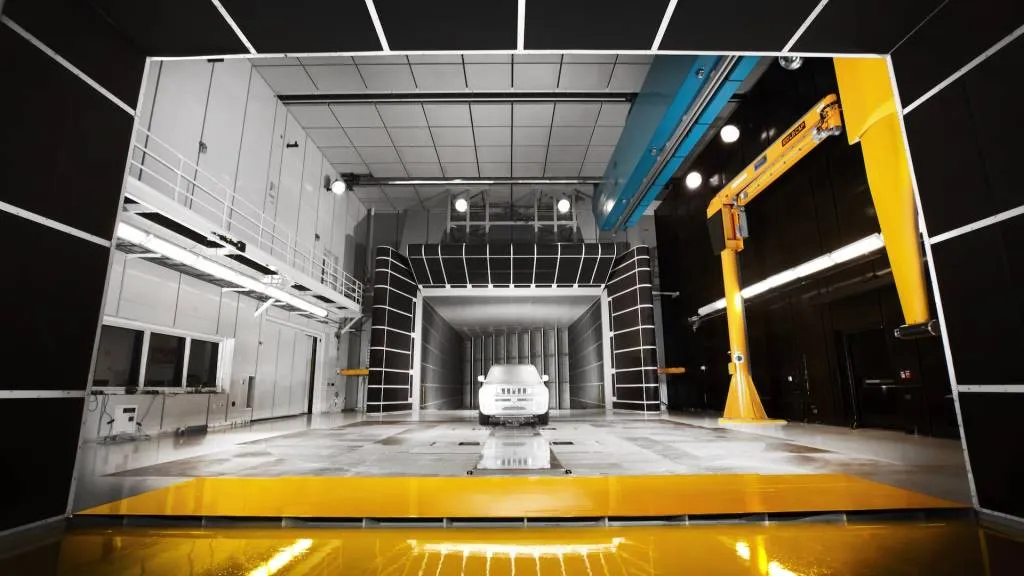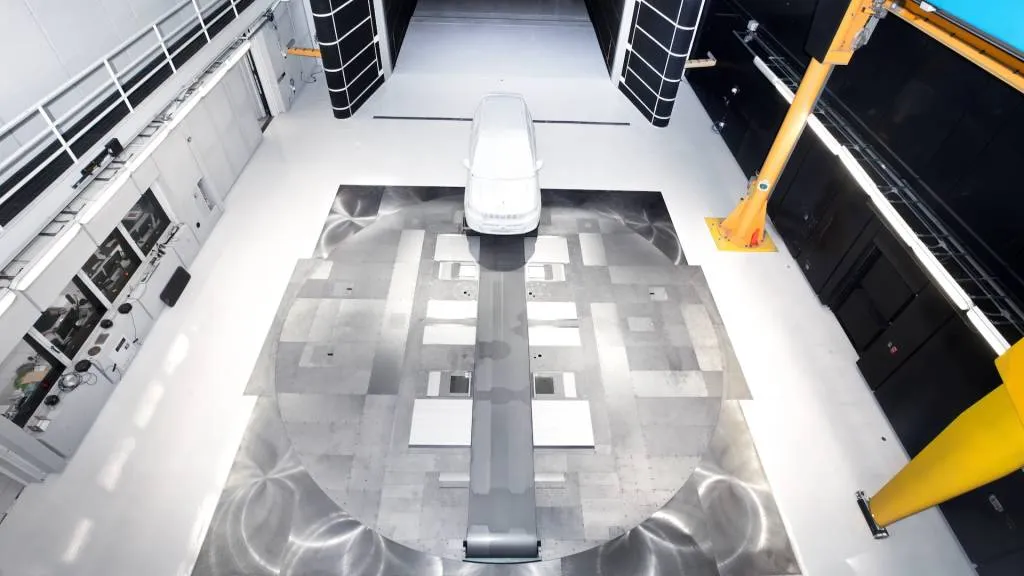- Stellantis upgraded its wind tunnel to the tune of $29.5 million
- The upgrades targeted on aero effectivity to assist with EV vary
- What used to take hours can now take minutes to alter with the latest wind tunnel upgrades
Stellantis on Wednesday unveiled a $29.5 million improve of the wind tunnel at its most important analysis and growth facility in Auburn Hills, Michigan, giving engineers an enhanced device to additional enhance effectivity and EV vary.
Upgrades to the wind tunnel, which has been in steady operation since 2002, embody provisions for particular measurements of airflow resistance round wheels and tires, Stellantis stated, including that wheels and tires can account for as much as 10% of real-world aerodynamic drag.
Autos stay static, with belts suspended on cushions of air turning all 4 wheels. A fifth shifting belt represents the impact of journey over a street floor. Compressed air drives the belts at speeds as much as 140 mph, whereas the tunnel is able to producing wind speeds of as much as 160 mph, in line with Stellantis. The automaker makes use of comparable wind-tunnel know-how at different amenities globally, however the Michigan facility can accommodate bigger autos—together with EVs primarily based on the STLA Massive and STLA Body platforms.

Stellantis wind tunnel in Auburn Hills, Michigan
Elevated automation additionally implies that adjustments of wheelbase and monitor that may take as much as two hours in standard wind tunnels can now be completed in minutes, in line with Stellantis. This lets the wind tunnel proceed to behave as an important complement to digital simulations.
“This equipment is a good addition to digital instruments, which can not account for elements reminiscent of tire deformation that may compromise aerodynamics,” Mark Champine, head of Stellantis’ North American engineering technical facilities, stated in an announcement. “With this know-how we will replicate such circumstances and seize real-time knowledge to discover options.”
The wind tunnel is a part of an estimated $85 million dedication to facility upgrades laid out in a 2019 Stellantis contract with the UAW. Nonetheless, the automaker can also be reportedly trying to promote its Arizona proving grounds.

Stellantis wind tunnel in Auburn Hills, Michigan
The necessity to maximize EV vary with out additional rising battery-pack sizes has revived a century-old obsession with aerodynamics—one which Stellantis is accustomed to. The Chrysler Airflow debuted in 1934 with wind-tunnel-tested styling that proved controversial on the time. The Airflow identify was revived in 2022 for an electrical SUV idea, though it is nonetheless unclear whether or not that car or a next-generation minivan would be the Chrysler model’s first EV.
Additionally of aerodynamic word is the 2024 Dodge Charger Daytona, primarily based on the STLA Massive platform and likewise getting used to take a look at solid-state batteries. The electrical muscle automobile makes use of an progressive entrance airfoil to reconcile the blunt entrance finish harking back to the basic 1968 Charger with fashionable aero necessities. The Daytona identify, which denotes all-electric fashions, additionally references the Charger Daytona race automobile, which used a pointed nostril cone and tall rear wing to reduce aerodynamic drag on NASCAR oval tracks.
Stellantis is concentrating on 50% U.S. EV gross sales and 100% European EV gross sales by 2030, with 75 fashions globally by that point.


